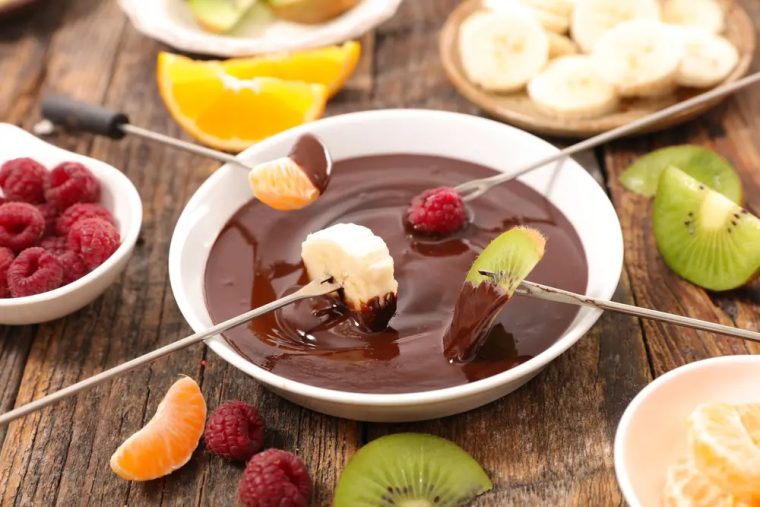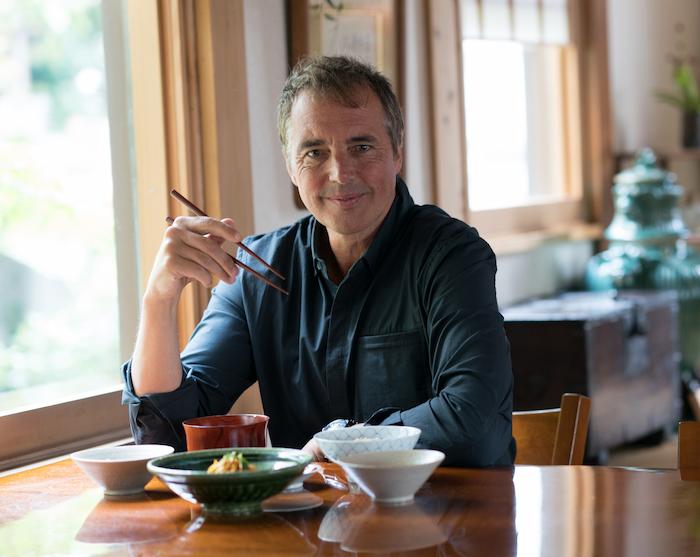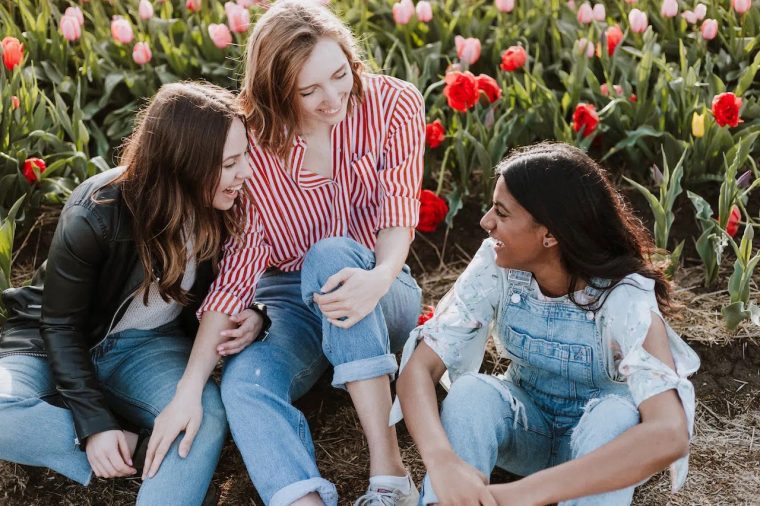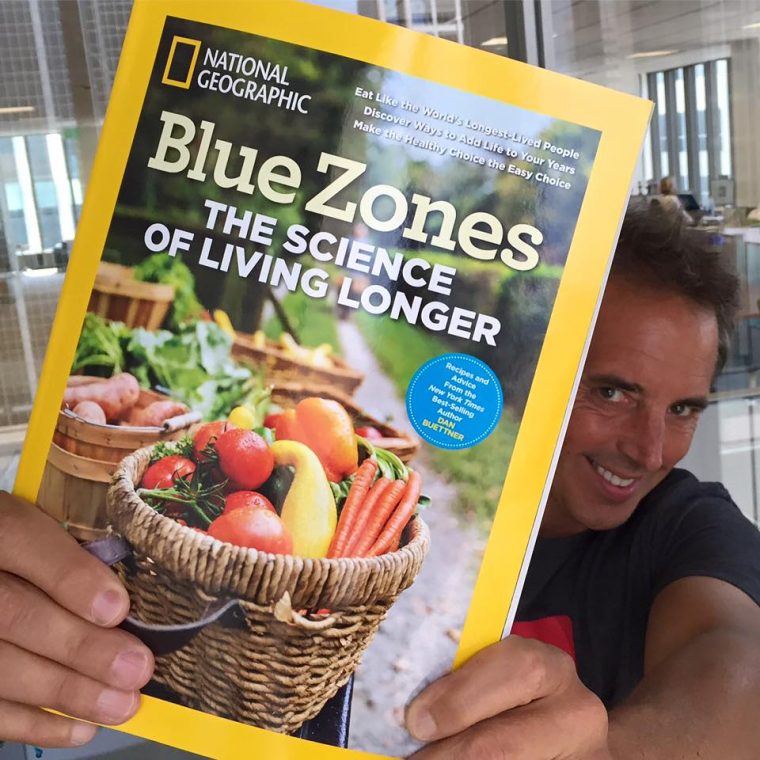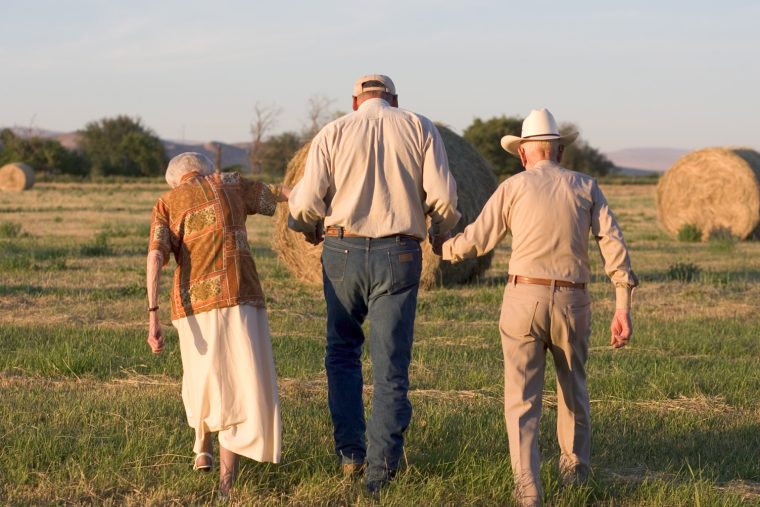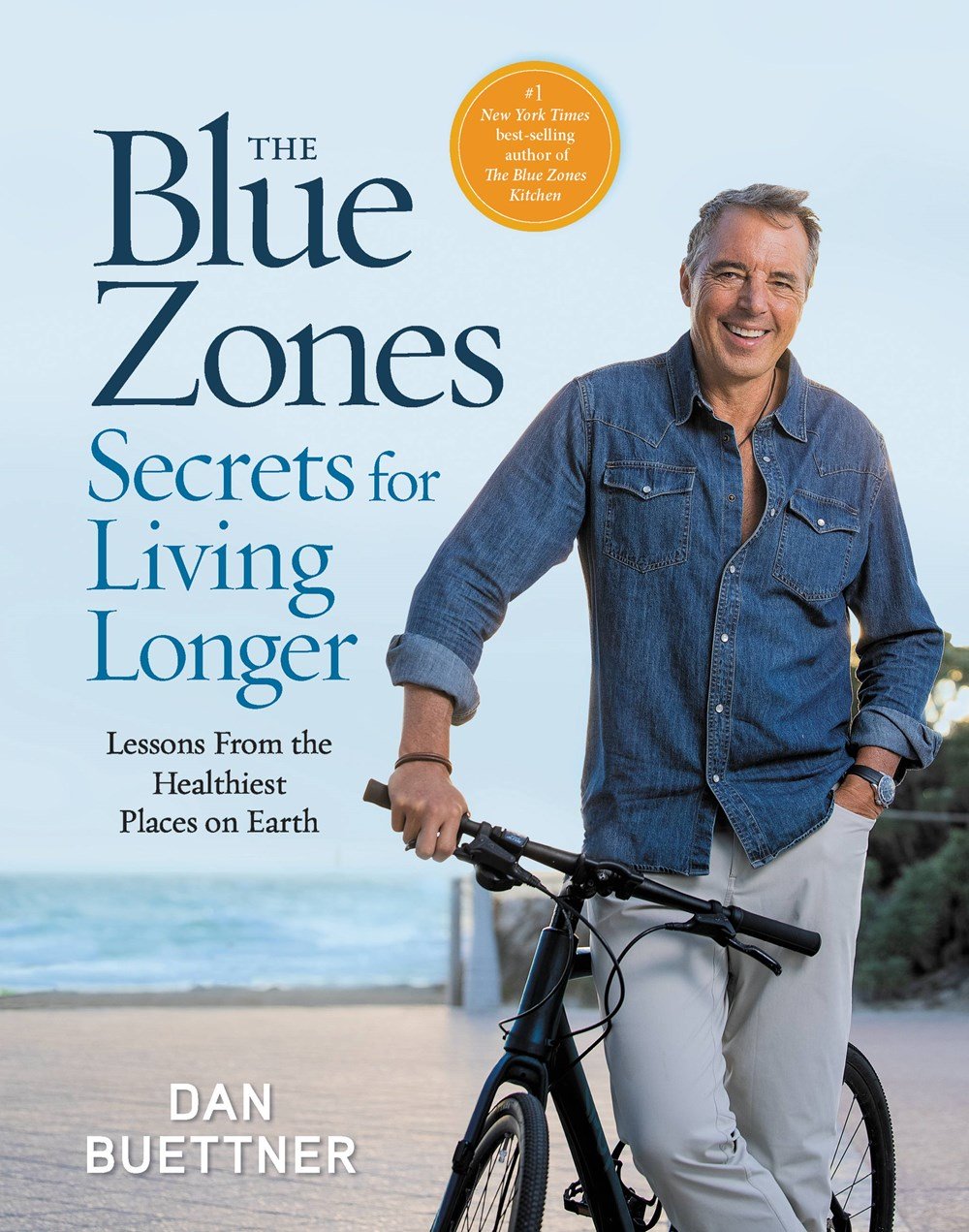As I said last time to start Edition 33, the last month of the year is a weird time for business on the internet… and I’ll tell you something else that I mean by that.
Basically: the nuances of “knowing your audience” shift somewhat during this weird final chapter of the year.
The other eleven months of the year, “knowing your audience” means knowing who’s listening to you and what they care about. But in this final month of the year (and particularly in this final week), it has a lot more to do with knowing their condition and being realistic about the attention you can expect them to pay.
Simply put, I don’t expect as many readers for this edition of Eating to 100—and as for the readers who do show up (much obliged), I frankly don’t expect as much of your sustained attention. I finished up 2023’s big thinking last time.
So for today’s two main pieces, I’m keeping it simple and light with…
?️ A re-published copy of my introduction to Singapore (the sixth and newest blue zone!) that I sent to email subscribers in September 2023. I want to get this into the Eating to 100 archive because I know it will be useful for reader reference down the road—and if you haven’t already seen it, here it is!
?️ One of the more… stimulating tangents to that introduction to Singapore that didn’t make the original cut because it would have been too much of a distraction. I’ll let you discover that one as you scroll down.
Aside from the customary Eating to 100 Recipe of the Week at the end, I’ve dispensed with the usual headings and just titled the pieces this time. Don’t worry… everything will be normal again in 2024.
Away we go!
?️ A Quick Intro to Singapore
the Sixth, Newest, and Most Revolutionary Blue Zone
Before [September 2023], I was playing things coy. I would mention that there’s a sixth new blue zone (and it’s the first manmade blue zone!), but I would reveal nothing else. Now I can just tell you outright:
It’s Singapore! ??
There’s a lot I could say, but we’ll just start with the basics for today: a quick introduction to Singapore and its short history, followed by the answers to two burning questions about its inclusion as the sixth and newest blue zone. Those burning questions:
1️⃣ Why has Singapore been added to the list, and what does it have in common with the five original blue zones?
2️⃣ How does Singapore stand apart from the five original blue zones (and why have I been referring to it as Blue Zone 2.0)?
So let’s get into it, starting with a quick-and-dirty history lesson…
Singapore established its independence from Malaysia and became a republic in August of 1965 and, at that time (just a few decades ago), the new nation was little more than a fishing village. Lee Kuan Yew, the first Prime Minister and the leader widely considered the country’s “founding father,” quickly took stock and noticed a few important things about the new nation’s prospects:
- Singapore is situated at a cultural crossroads; ethnically speaking, Singaporeans are 74% Chinese, 13% Malay, and 9% Indian these days. Especially in the beginning, this created potential for conflict and division—so, among other solutions, English was chosen as the country’s official language to neutralize linguistic rivalries and prepare the workforce for international trade.
- Singapore never had much in the way of natural resources, and they definitely never had a lot of acreage to work with; the whole country is less than 300 square miles, which is about one quarter the size of the smallest U.S. state (Rhode Island).
- What Singapore did always have (aside from its economic moxie) was location, location, location. Leaders like Prime Minister Yew knew from the beginning that Singapore’s path to prosperity would require it to become a hub of trade and finance… and now it’s one of the biggest in the world.
I had the privilege of interviewing Prime Minister Yew in 2009, and I asked him if he’d had a plan, way back when, to lay the groundwork for Singapore’s success. His response?
“It was simpler than that. I had to make it work, or we’d all die.”
Unless you count the Flight of Icarus (and I don’t), none of the other blue zones were shaped by such crushing existential pressures. That’s part of the root difference between Singapore and the other blue zones, but we’ll come back to that after we’ve covered the essential comparisons.
Now to Burning Question #1:
1️⃣ Why has Singapore been added to the list, and what does it have in common with the five original blue zones?
Singapore is, to say the least, a remarkable success story (and there’s finally enough data to prove it). Two short generations after its humble fishing-village origins, Singapore is now home to 6 million of the healthiest, wealthiest, and longest-lived people in the world.
A few specifics:
- In 2019, Singapore was ranked #1 in the world for life expectancy at birth (84.9 years, 6 years more than in America) and #1 in healthy life expectancy, or the number of years you can expect without serious health issues.
- Singaporeans have the lowest rates of cardiovascular mortality in the world. In other words, they’re the people who die least often from the kinds of common, preventable diseases that are prematurely killing so many Westerners.
- Though they have arguably the best healthcare system in the world, Singaporeans set the bar high and continue raising it higher. There’s pride and professionalism, but there’s also a pervasive sense among Singaporeans that such a small nation (no matter its prosperity) has a smaller margin for error.
The key thing Singapore shares with the other blue zones: a deeply ingrained understanding of the ways that our environments (more than our choices) affect our health.
Other blue-zoners seem to “get” this, but probably none more than Singaporeans—again, because they’ve been painfully aware that their entire country is barely bigger than New York City, and that their influence over their environment matters so much more as a result.
This brings us to Burning Question #2:
2️⃣ How does Singapore stand apart from the five original blue zones (and why have I been referring to it as Blue Zone 2.0)?
If you study each of the five original blue zones, it will eventually dawn on you that they could be called the five luckiest places in the world; each place owes its robustly healthy environment to some serendipitous combination of factors that nobody “designed.” There’s still a ton worth studying in these places, but my point is that the first five blue zones were discovered as they already existed. They’re quieter, calmer places whose “magic health formulas” are preserved largely by solitude and isolation—by the simple fact that things don’t change very fast around those parts.
When I say that Singapore is the first “manmade” blue zone, that’s not just a neat piece of trivia. It’s the foundational difference between Singapore and the other blue zones, and—more importantly—it’s amazing news for the rest of us because it means that we really can create a healthy world from scratch, without having to wait for Mother Nature’s lucky spots to reveal themselves.
There are countless different ways that Singaporean culture and society contribute to its healthy environment. Some of them are close to Westerners’ hearts while others might seem, at first glance, alarming in their backwardness (it’s really fun to talk about Singapore’s drug laws, though I’ll have to open that can of worms another time). This much can safely be said for now: when I refer to Singapore as ‘Blue Zone 2.0,’ I mean that it’s the first blue zone which got here by design and by choice and, God willing, that’ll be the way of the future for more healthy places all around the world. ?
PS: If you’re ever traveling through Southeast Asia and considering a stop in Singapore’s Changi Airport, take the option and give yourself a long layover. Not because you’ll need it, but because it might be the most imaginative, beautiful, and entertaining airport in the world, and it’s loaded with the kinds of unique attractions that will make you want to stay a couple more hours. Explore the link above and you’ll see what I mean (it involves waterfalls, giant trampolines, and so much more).
?️ Paradise and the Gallows
an Informal Introduction to Singaporean Drug Law
If a person only knows three things about Singapore, those three things are probably 1️⃣ that it’s a tiny country in southeast Asia, 2️⃣ that it’s wealthy and technologically advanced (travelers might mention their airport), and 3️⃣ that it has draconian drug laws, the kind where you can get sentenced to death just for possession.
That last one is colorful, isn’t it? It gives the mental image of Singapore a lurid sort of spin—like here’s a wealthy, techno-futuristic, semi-utopian city-state where they… hang people at dawn for drug possession? ?
When I was finally able to introduce Singapore as the newest blue zone (in the article reprinted above this one), this was the tangential thread I had to leave untied. Simply put, it was too big a distraction from the core explanations of Singapore’s remarkable success.
Having said that, Singapore’s “draconian” drug laws (it’s a popular choice of adjective) aren’t totally irrelevant to us here. In other words, they do help to explain something about Singaporeans’ impressive health and longevity.
I’m not sure when else I’d return to this titillating (but somewhat tangential) topic, so I might as well reward your end-of-year attention and do it now!
So: what’s the deal with Singaporean drug laws, and what food for thought might they provide us?
First of all, Singapore’s drug laws are not quite as strict as many people seem to think. For example, paranoid travelers get the impression that they could be executed for possessing any amount of illegal drugs when, in reality, you’d need to possess huge amounts—amounts far exceeding what any typical drug user might keep (details further down).
Even so, the basic paradox remains intact: Singapore is both a futuristic beacon of human progress and a place that deliberately uses old-school capital punishment. So let’s loosen this paradox a little bit.
I would first point out that, though most of the Singaporean people I’ve met are affable and well-adjusted, Singapore as a nation has a heightened instinct for survival. This is for a handful of intersecting reasons, like…
- They’re tiny. The whole country is a quarter the size of Rhode Island and, even with a relatively high population density, that only adds up to 6 million people. They’re like a chihuahua running among pit bulls, or a goldfish swimming among sharks.
- They have a much smaller margin for error (because they’re tiny). Everything has to work and everyone has to pull their weight, especially when you know that—in the grand scheme of history—a relatively small mistake or vulnerability could wipe your tiny nation off the map.
- They know “the weakness of their strength” and they stay ahead of it. One of Singapore’s main areas of strength is their location and connectedness to other parts of the world. It’s a strength because they’re naturally positioned to profit from trade of all kinds—but it’s also a weakness because, well, some of the commodities that people trade are dangerous. Any dangers passing through Singapore pose a danger to Singapore, especially when Singapore is so small.
Illegal drugs pose an especially insidious danger, one that can multiply and mutate in some nasty ways. Drugs are addictive; they attract criminality and violence; they destroy lives, families, and even entire communities. That’s true anywhere, but a drug epidemic big enough to bruise and batter one country could send Singapore into full-blown cardiac arrest—so they treat drug trafficking like the existential threat that it is.
As their government explained in a detailed response to an Amnesty International report:
It is no secret that Singapore considers drug trafficking among the most serious crimes and that, given Singapore’s small size and location near the Golden Triangle, views itself as particularly vulnerable to the drug menace. […]
The fact is, Singapore does not mete out the death penalty lightly. The amount of heroin leading to a mandatory death sentence must be more than 15g. This refers to more than 15g of heroin in its pure form, i.e. diamorphine. This is equivalent to a slab of approximately 750g of street heroin capable of being made into over 3,700 heroin straws, with a street value of over US$100,000. This is well above the amount of heroin that an addict would normally need for his personal consumption alone.
As for their stance on capital punishment:
The death penalty is a just punishment for those who knowingly and intentionally commit serious crimes which threaten the lives of others. The death penalty, because of its finality, is more feared than imprisonment as a punishment.
And on capital punishment for drug possession in particular:
The death penalty plays a key role in deterring organized drug syndicates from establishing themselves in Singapore and keeps the drug situation under control.
Ethical and philosophical questions are open for debate. Numbers, however, are not—and the numbers say, pretty unequivocally, that whatever Singapore’s doing is working. In 2021 in America, over 100,000 people lost their lives to narcotic overdoses, and in Singapore that number was…
… seventeen. Just 17. That’s a night-and-day difference, even when you account for the 50x difference in population.
The funny thing about the “draconian” label for Singaporean drug laws is that it’s reasonably accurate, and yet it’s also proof that the laws have accomplished exactly the good they set out to accomplish. They might be draconian, but they’re also fiercely protective and they succeed at it—both by the numbers above and by making the boundaries crystal-clear to the rest of the world.
It’s not as though Singaporeans are ruled with an iron grip and ever under the threat of death. Quite the opposite: they’re a free people who are happily engaged in their communities and, compared to most other nations, their “social contract” is in good working order. In a recent poll, 70% of Singaporeans said they trusted their government compared to just 39% of Americans responding to the same survey. It’s the kind of trust that leaves many Singaporeans feeling compelled to excel further and give back more as a result.
I won’t try to pretend that nobody in Singapore uses any drugs—let’s not be naive—but a lot of Singaporeans really do “just say no” to drugs, and even those who say ‘yes’ and develop problems are able to get help without threat from the hangman. Where there are drug problems, they get resolved long before they turn into drug epidemics.
I also won’t try to pretend that Singaporeans are all of one mind on this subject, but… drugs and drug laws and “draconian” punishments simply aren’t day-to-day issues for most of them. They tend to have a more focused view of capital punishment, one tailored for their own practical needs and articulated with a minimum of philosophical pretense (see above). The messier implications of capital punishment and corporal punishment don’t run as wide and deep in Singapore as they do in, say, America—where you could favor such ideas in theory yet still vehemently oppose them for the unfair manner of their application.
So what does this leave us to mull over? I have three parting thoughts:
1️⃣ Once again, Singapore deeply understands the blue-zone adage that our environments have more influence over our health than our choices do. As I’ve said about the other blue zones, Singapore is not a regular place where exceptional people live to 100; it’s an exceptional place where regular people live to 100. It’s worth pausing a moment to think about that: to realize that typical people can live exceptionally healthy lives without the pain or effort we expect, even without having to think about it, just because their environments are constructed in such healthy ways.
2️⃣ Without blindly recommending Singaporean policies for the rest of the world, we should take note of their politics, specifically how they manage to get important work done without descending into madness. They seem to understand at a deeper, post-partisan level that political systems have enormous influence over the environments we live in and that petty, unfocused squabbling only hurts those environments in the long run. They have a refreshing level of respect for science and data and, perhaps because of that, they have an easier time focusing on (and getting) measurable results. And on that note…
3️⃣ Whether or not you agree with their penal philosophy, you can’t deny that they get results for their people (and send a clear message). I’ve spent a lot of time in Singapore and talked to a lot of Singaporeans, including their first prime minister, and nothing has given me the impression that Singaporean laws or lawmakers take pleasure in executing their own citizens. At the same time, they don’t see any clearer way to communicate the grave seriousness with which they regard certain crimes, and these policies very much seem to be working for them. Part of Singapore’s greatness is that they don’t allow Perfect (or Principle) to become the enemy of Good.

Easy Chocolate Fondue
Ingredients
½ can (7 ounces) coconut cream
½ cup cashew milk (or other non-dairy milk like soy or coconut)
12 ounces semi-sweet chocolate chips (dairy-free or vegan)
2 teaspoons pure vanilla extract
1 pinch high-quality fine sea salt
Fruit for dipping, like strawberries, bananas, grapes, pineapple, etc. (You can also use breadsticks, pretzels, or cubed sourdough toast as dippers.)
The Method
- In a sauce pot or fondue pot, heat milk and coconut cream over medium heat until hot.
- Add chocolate chips and immediately lower heat.
- Stir frequently until chocolate is melted.
- Add vanilla and salt.
- Transfer to fondue pot (if using).
- Serve chocolate fondue warm with dippers.
